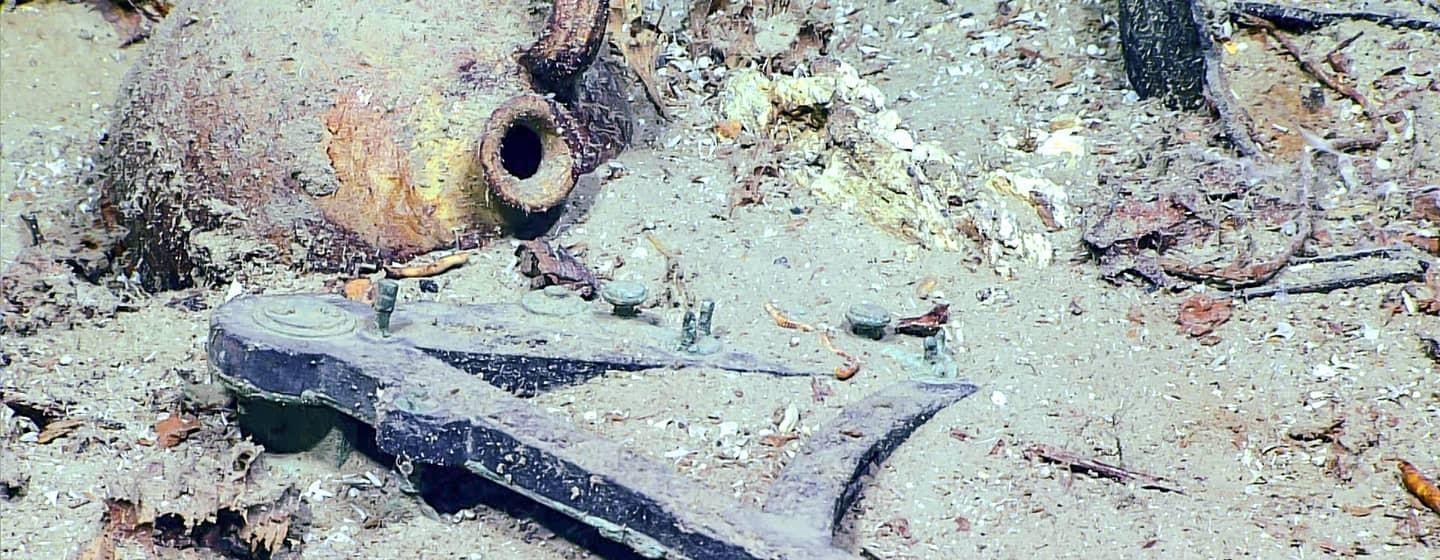Mystery Still Surrounds Centuries Old Shipwreck Discovered Off NC Coast


Scientists still don’t know the identity of an old shipwreck discovered off the North Carolina coast, five years after it was found.
The wreck lies about one mile under the surface in near-freezing temperatures. Marine organisms have eaten away the exposed wood, however timbers buried in the sand and other artifacts are well preserved. The artifacts in the debris field suggest the ship may date to the American Revolution.
Marine scientists from Duke University, North Carolina State University and the University of Oregon discovered the wreck in July, 2015, during a research expedition aboard the Woods Hole Oceanographic Institution (WHOI) research ship Atlantis.
The team was searching for a mooring that was deployed on a previous research trip in the area in 2012 when the debris was spotted using WHOI's robotic autonomous underwater vehicle (AUV) Sentry and the manned submersible Alvin.
Some of the artifacts discovered amid the shipwreck's broken remains are an iron chain, a pile of wooden ship timbers, red bricks (possibly from the ship cook's hearth), glass bottles, an unglazed pottery jug, a metal compass, and another navigational instrument that might be an octant or sextant.
The wreck appears to date back to the late 18th or early 19th century. It was a time when a young United States was expanding its trade with the rest of the world by sea.
Three years after the discovery, the NOAA Ocean Explorer surveyed the wreck with their Marine Archeology Team in 2018.
Watch the eerie video of the team mapping objects and portions of the ship on the ocean floor on NOAA's mission log site.
"This is an exciting find, and a vivid reminder that even with major advances in our ability to access and explore the ocean, the deep sea holds its secrets close," said expedition leader Cindy Van Dover, Director of the Duke University Marine Laboratory, when the discovery was announced.
The expedition had been focused on exploring the ecology of deep-sea methane seeps along the East Coast and on the ecosystems surrounding the vents that are powered by chemistry rather than sunlight.
The missing mooring had been placed near the vents several years before. When side scanning sonar revealed a dark area that could be the mooring, the team went to investigate and found the shipwreck instead.
It was an accidental discovery. Scientists were working within 100 meters of the wreck without any idea it was there.
“The discovery is exciting but not unexpected,” said James Delgado, director of the Marine Heritage Program. “The wreck rests along the path of the Gulf Stream, which mariners have used for centuries as a maritime highway to North American ports, the Caribbean, the Gulf of Mexico and South America, however violent storms off the Carolina coast sent large numbers of vessels to the bottom.”
"This discovery underscores that new technologies we're developing to explore the deep-sea floor yield not only vital information about the oceans, but also about our history," said David Eggleston, director of the Center for Marine Sciences and Technology (CMAST) at NC State.
But the mystery remains.